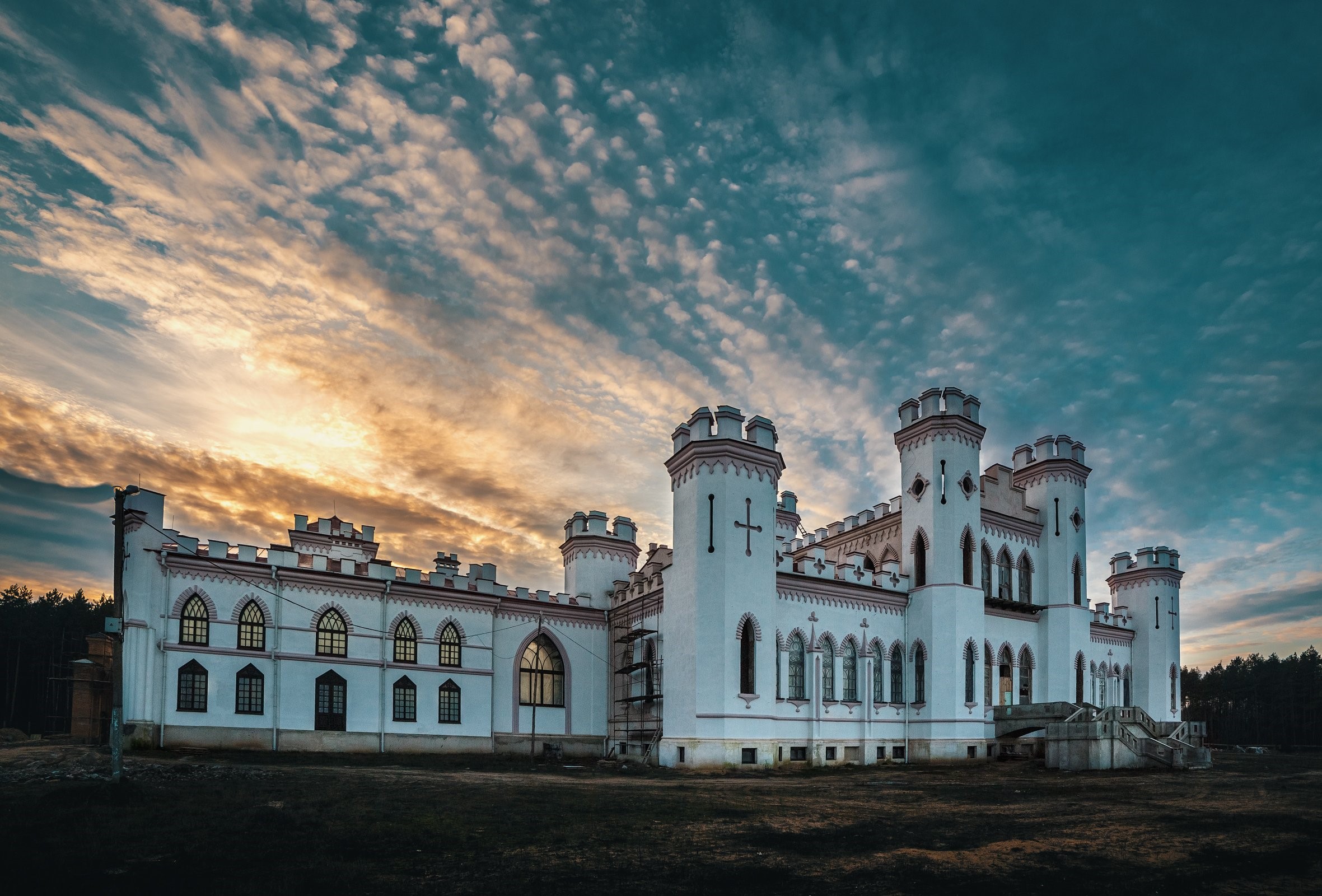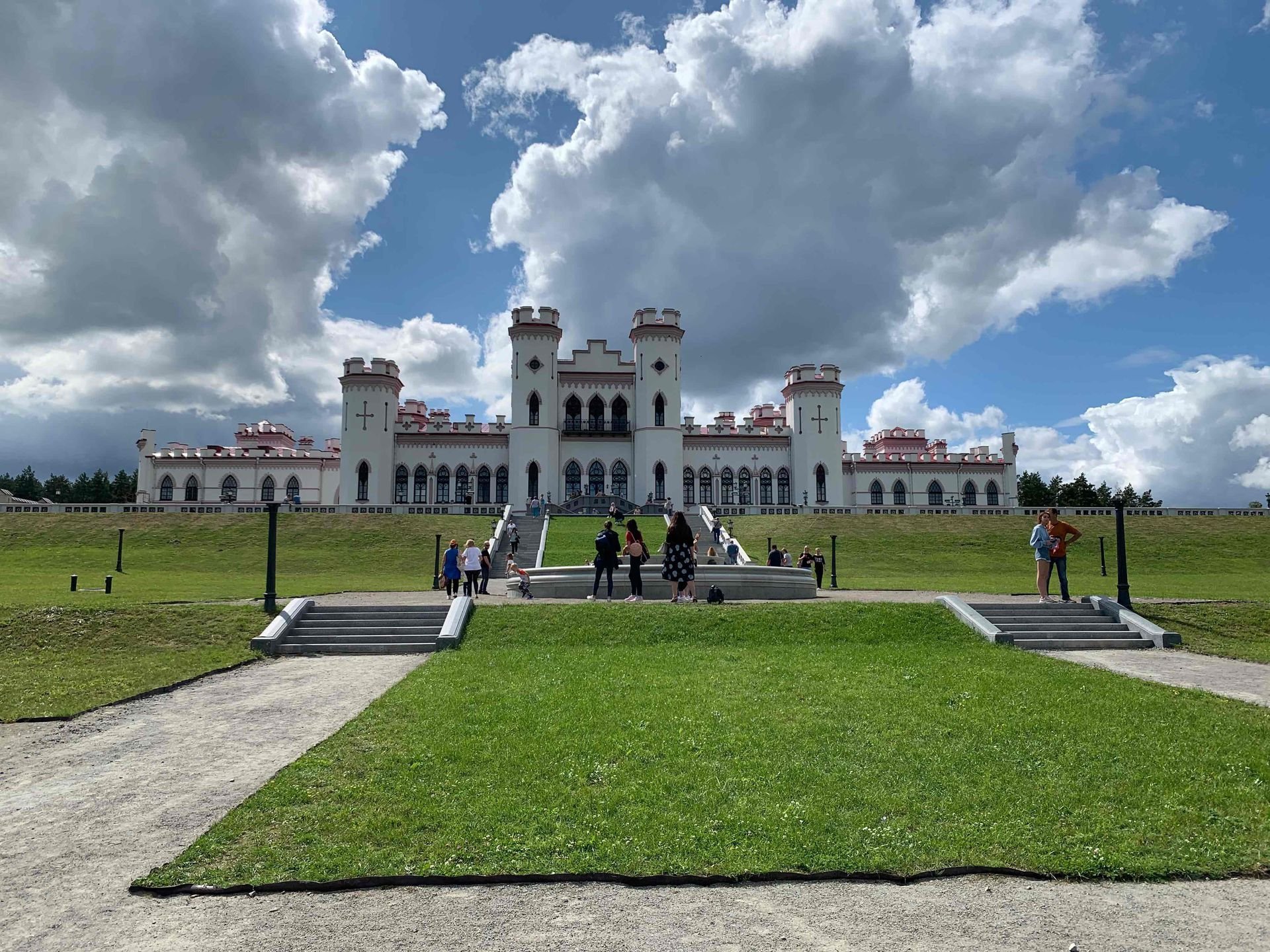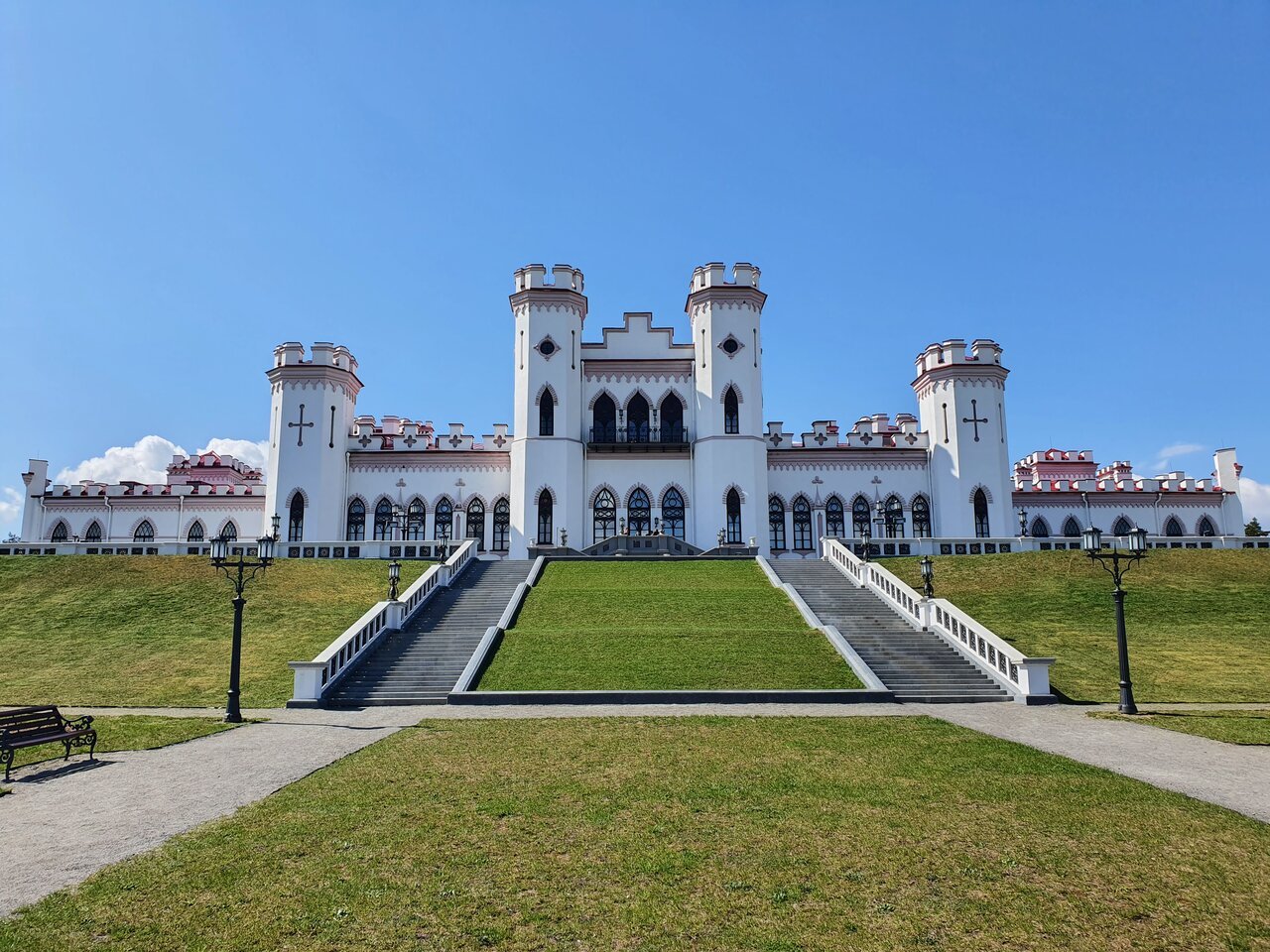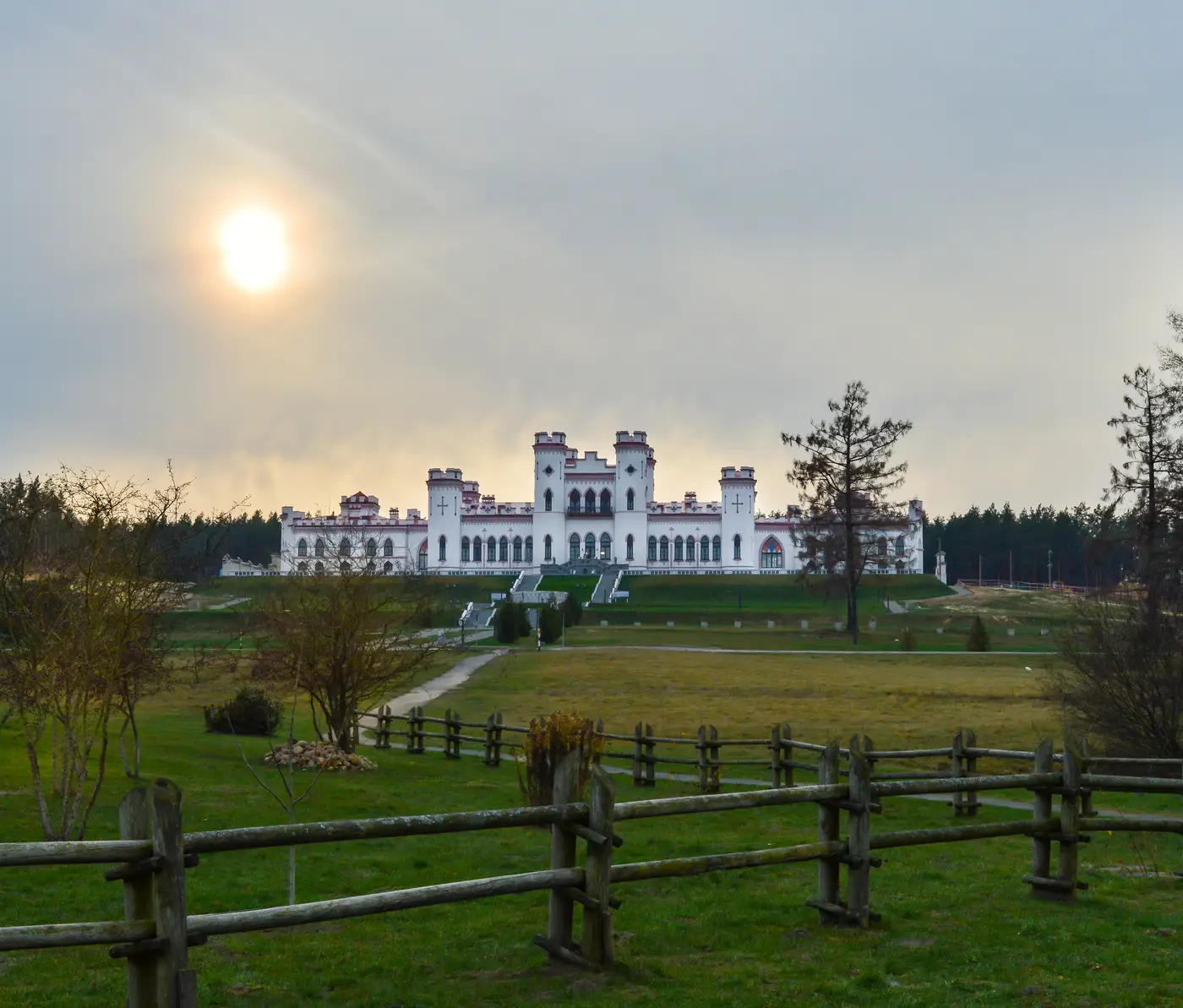The history of the Puslowski Residence
The origin of the Puslowski family has not yet been definitively established. It is only known for certain that in the 17th century, they had a family nest in the Peski of the Slonim district of the Grodno region. The family gained wealth thanks to the nobleman Voitech Puslowski, who built a huge business empire.

His son, bookman and collector Vandalin, decided to build a castle on the family's lands near Kossovo. The location was not chosen randomly - nearby was the Merechevshchina estate, where Tadeusz Kosciuszko was born and lived. Vandalin, a fervent admirer of the famous political figure and leader of the uprising, chose to establish his family's ancestral nest nearby as a sign of his deep respect and admiration.
The Puslowski family made the area more refined: they dug three ponds, made an embankment, and began to build a castle on it. The project was ordered from Polish architect Frantisek Yaschold. At that time, it was fashionable to long for medieval luxury and romanticism, so Vandalin Puslowski chose the aristocratic gothic style of architecture.
A journey through time
To "see with your own eyes" all the splendor of this most beautiful aristocratic estate, you need to travel back to those distant times. It was a unique architectural object with engineering communications for its time!

At the entrance, visitors were met by the monumental and majestic Central gate with crenellated decorative towers, reminiscent of a fortress wall. Through it, the owners and their honorable guests entered the estate.
Next, a view of the garden and park complex with terraces and the palace on a hill was revealed. The estate was adorned with 12 towers to match the number of months in a year. There were 132 rooms in the palace, and none of them were passage rooms, each with a special and unique interior.
Each hall had its own purpose. The White hall was used for balls and receptions, in the Black one, paneled with marble, table games were played, and music was played in the Pink. One of the halls had a peculiar feature for that time - a glass floor, and under this glass, right under the feet of the visitors, fish swam. The castle had a rich library and art gallery, as Puslowski was a great lover of literature and art, a progressive patron and a passionate collector.

The house had many fireplaces with carved portals, but it was heated by a real water heating system with pipe distribution. The water for these batteries was heated in boilers. And this was far from the only wonder of engineering thought! There were fountains on the terraces, a greenhouse was located on the territory, and the park alleys were adorned with sculptural compositions.
Famous guests often visited the palace: Napoleon Orda, Eliza Ozheshko, Vaclav Lastovsky, Henryk Sienkiewicz.
Under the castle there was a basement, the multi-kilometer passages of which led to Kossovo, Ruzhany Castle, and Vilna (modern Vilnius). Unfortunately, archaeologists have not been able to find even traces of these passages. Perhaps these tunnels once existed, but they were tracelessly filled with earth. Or maybe these are just legends, like the stories about the lion that lived in the castle and which the owners sometimes let out for a walk.

A tragic fate and a period of desolation
Alas, soon the Puslowski family lost their ancestral nest, which was built by representatives of several generations. Leon, the son of Vandalin, a gambler and party animal, squandered a significant part of the estate and lost the Kossovo estate in a card game.
Afterwards, the estate changed hands several times, but none of the new owners cared for it - the estate fell into decline.
During World War I, the estate was looted, and unique relics (paintings, manuscripts, family values) disappeared without a trace. At the end of World War II, a fire broke out in the Kossovo Palace, which practically destroyed the castle. For a long time, the only reminders of the once luxurious estate were the walls, blackened by soot and time.

The Puslowski Palace in Kossovo today
Though the palace suffered greatly, it was not completely destroyed. Therefore, the decision was made to restore it. Even before the completion of the work, the castle became a tourist mecca!
For now, only a portion of the halls with the exhibits placed in them are open to visitors. Each of them opens a new page of our country's history for the guests: it tells about the family of the Counts Puslowski, about the life of the estate, about the events of the past century.
Also, the excursion program to the sights of Kossovo should include another significant object. Right next to the Count's estate is the Tadeusz Kosciuszko estate-museum. It is also open to visitors and warmly welcomes curious guests.